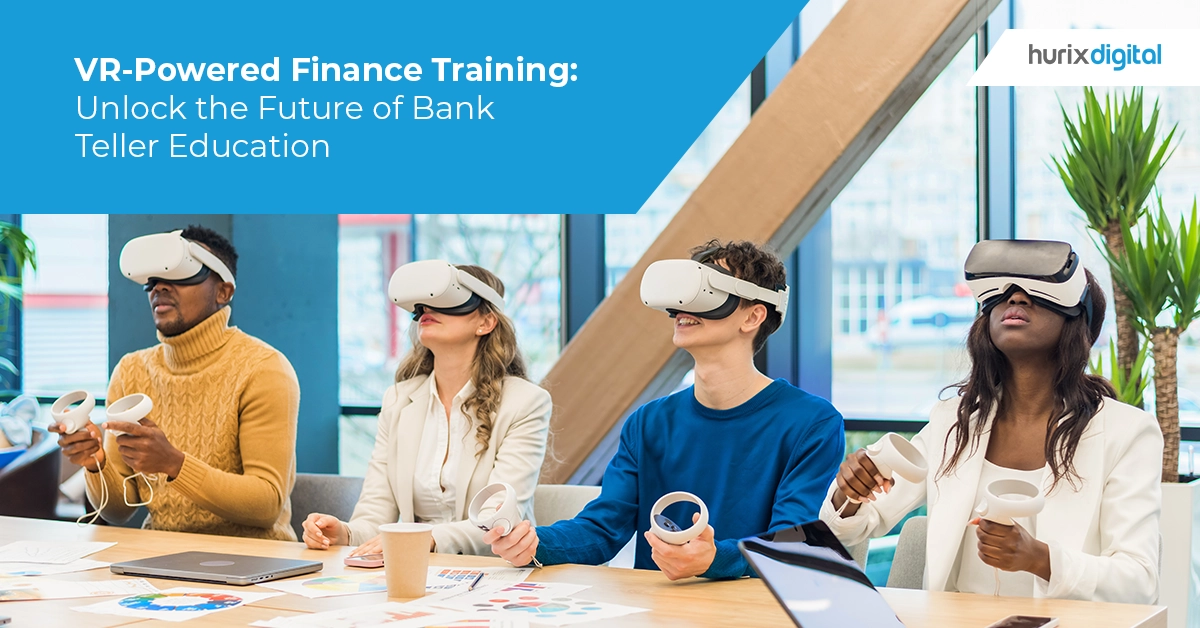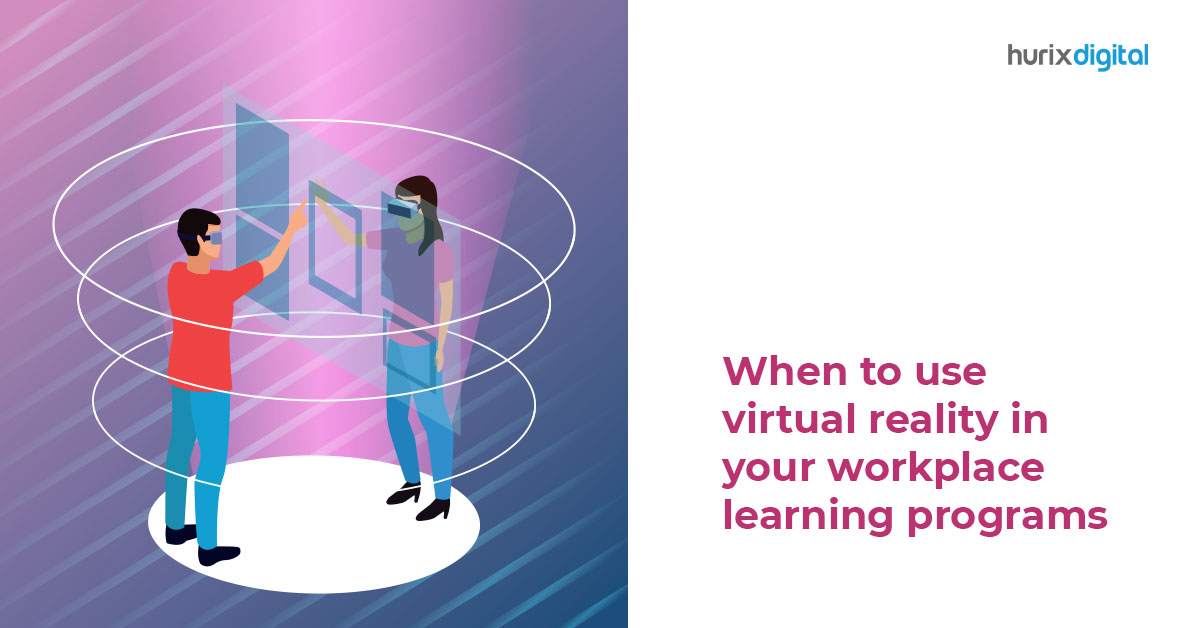
VR-Powered Finance Training: Unlock the Future of Bank Teller Education
Summary
This article presents a comprehensive overview of the benefits of implementing Virtual Reality in the banking education system. It explains the various ways through which the implementation of VR can be beneficial. This can be achieved by streamlining the training process, eLearning the job roles, and honing the skills of bank tellers.
Banking is a highly coveted noble pursuit. But, with the forecasted expansion of the global commercial banking market to a $7,404.4 billion valuation by 2031, more and more aspirants are expected to join the league.
This anticipated upsurge presents a pressing need to make the banking education system more robust and efficient. Especially for simpler job roles like that of a bank teller, arrangements can be made to streamline the training process.
This will enable institutions to shift their attention towards the more technically demanding job roles and hone them to perfection.
In facilitating this, Virtual Reality (VR) can prove to be a productive aid. Through VR-powered finance training, authorities can maximize efficiency and transform the face of financial service training. Let’s understand how.
Table of Contents:
- What is VR-Powered Finance Training?
- How Can VR-Based Training Revolutionize Bank Teller Education?
- Ways to Implement Virtual Reality in Financial Services Training
- Wrapping Up
What is VR-Powered Finance Training?
VR-powered finance training refers to the process of deploying VR solutions and software in the financial sector. This enhances and amplifies the training process of financial professionals.
As Virtual Reality (VR) is an immersive technology that uses simulations, this can prove to be a revolutionary step in several ways. This is in an era where financial markets are becoming increasingly complex and technology-driven.
So, VR-powered finance training can equip individuals with the knowledge, skills, and confidence needed to thrive in the dynamic landscape of finance.
The optimization of VR has already revamped the training regimen of professionals in several sectors, such as healthcare, education, and marketing. Hence, in the field of finance as well, the introduction of this interactive technology can be productive.
How Can VR-Based Training Revolutionize Bank Teller Education?
There are many ways through which the implementation of VR solutions in the financial sector can revolutionize training.
Particularly in terms of bank teller education, here are a few ways through which VR-based training can prove to be efficacious:
1. Encourage Risk-Free Training
Bank teller education does not involve a steep learning curve. However, these professionals need to be adept at risky banking tasks such as handling cash, managing customer records, bank reconciliation, etc.
With the help of realistic simulations created by VR, trainees can practice these financially critical chores in a controlled, risk-free environment. This boosts their confidence while also causing zero financial loss.
2. Increase Engagement
VR training solutions mainly revolve around creating real-life simulations. This fosters an immersive learning experience that’s interactive and engaging.
In fact, with the optimization of such training solutions in learning, about 72% of students claim to have gained positive attention in lessons. This increased rate of engagement and attention confers many benefits.
For instance, learners are not only able to grasp concepts more quickly. They also enjoy the training process, resulting in improved motivation.
3. Promote Training Consistency
When it comes to bank teller training, following a standardized model is a necessity. Its absence can cause a lack of uniformity in the workforce, thus triggering the risk of disparity and negligence.
However, achieving this level of balance is difficult through traditional training methods.
But, VR-powered training solutions are designed in a way that they can offer a truly standardized training experience. They not only create a consistent and immersive training atmosphere. They can also generate replicable simulations.
With their help, it’s possible to provide high-quality, consistent instructions to every single trainee.
Also Read: Excel in the Banking Industry with our Training Programs
Ways to Implement Virtual Reality in Financial Services Training
The advantages of introducing Virtual Reality (VR) in financial enterprise training are many. Now, let’s check out a few methods through which you can implement this technology to make them a reality;
1. Identify Training Objectives
Lay the foundation of your VR-powered bank teller training by setting clear objectives. This entails outlining a comprehensive blueprint that highlights what you aim to achieve from the program.
This could involve training the bank teller aspirants in meticulously verifying customer identification, handling financial documents, furnishing account-related information, resolving basic customer queries, etc.
2. Select the Right Solutions
For incorporating Virtual Reality (VR) in any financial service training, it’s essential to set up the training premises.
So, once you have set your objectives, check out a few VR solutions whose features align with your needs. For instance, if you want to train a bank teller trainee customer interaction, you can equip them with a VR headset to let them practice in a virtual setup.
There are many hardware like VR headsets, motion controllers, consoles, and software like VR development platforms, browsers, and simulation software you can choose from.
3. Develop Content
The next crucial step is creating relevant content for the training program. You can choose to create custom content or optimize pre-existing resources from the internet.
There’s a plethora of content options that you can use to impart training with VR, like guided exercises, assignments, quizzes, or other simulation-based activities. Your main focus here should be to make them as engaging and interactive as possible.
4. Integrate with Existing Training Programs
To enhance training effectiveness, it’s ideal not to rely entirely on a single teaching model. Following a blended approach that involves both classroom learning and simulations fosters better results – 73% of educators swear by it.
So, if you have an existing financial training program in place, integrate it with VR. This will make the training experience more engaging, immersive, and complete.
5. Conduct Regular Assessments
Once the VR-enhanced learning system is operational, conduct regular follow-ups and assessments. This regular intervention ensures the course is relevant and misses no crucial aspect.
So, hold routine tests and evaluations and gather feedback from learners to measure the efficiency of the program. Then, you can use this data to refine and optimize the curriculum to make it more potent.
Also Read: AR & VR in Finance: How They are Empowering Finance Teams
Wrapping Up
In 2023, technology has become a core element in facilitating financial training and education.
Whether it’s students or professionals, the involvement of advanced, innovative mechanisms like Virtual Reality (VR) has revolutionized the entire financial training landscape and boosted its overall efficiency. Its pros are not limited to just that. VR solutions have made learning more engaging and effective – the best advantage of all.
So, don’t wait anymore! Accentuate your financial training programs and revolutionize bank teller education with the help of VR-powered finance training solutions.
And if you’re looking for someone to kickstart your journey with, Hurix Digital is your one-stop solution. With our comprehensive eLearning and Training Solutions, we help financial institutions leverage the power of VR in professional training.
We also offer features like gamification, scenario-based learning, and business simulations. So hurry up – revolutionize financial service training today.
Get in touch today!

Senior Vice President – Business Development
Over 25 years of experience in the edtech and workforce learning industry with strong skills in Business Development, Customer Relationship Management (CRM) and Strategy.







